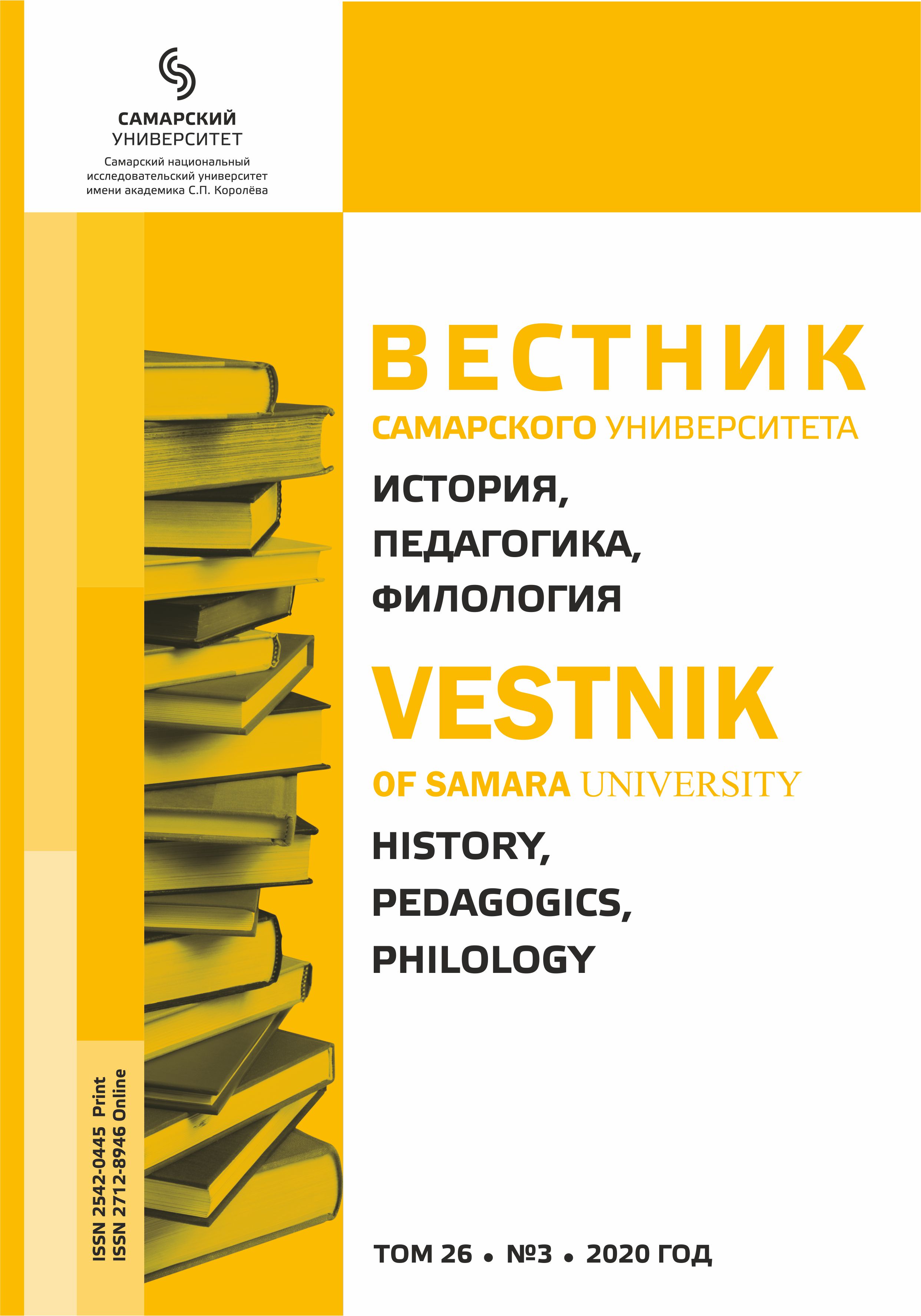Городская периферия. Проблема стихийного роста территории Самары во второй половине XIX – начале XX в.
- Авторы: Чепурнова Е.И.1
-
Учреждения:
- Самарский национальный исследовательский университет имени академика С.П. Королева, г. Самара, Российская Федерация
- Выпуск: Том 26, № 3 (2020)
- Страницы: 22-27
- Раздел: Статьи
- URL: https://journals.ssau.ru/hpp/article/view/8180
- DOI: https://doi.org/10.18287/2542-0445-2020-26-3-22-27
- ID: 8180
Цитировать
Полный текст
Аннотация
В статье анализируется эволюция городского пространства губернского центра Среднего Поволжья на примере Самары в ракурсе образования и развития периферии города. Вторая половина XIX – начало XX в. характеризуются стремительным ростом городского населения, что обусловило массовое возникновение рядом с регулярным городом новых поселений. Для Самары характерно стихийное строительство новых пригородных поселков, которое, как правило, велось жителями самовольно без согласования с городскими властями. Целью статьи является анализ воздействия фактора стихийности на формирование и развитие городского пространства. Анализируется влияние стихийных пригородов на городское пространство Самары и на формирование ее социокультурной идентичности. Выявляется роль Самарской городской думы в решении проблем стихийной застройки городской территории Самары на рубеже XIX–XX вв. Исследование проведено в рамках предметного поля исторической урбанистики и опирается на междисциплинарный и социокультурный подходы. В качестве источниковой базы исследования используются делопроизводственная документация, материалы периодической печати и эго-документы. Доказано, что возникновение стихийных пригородов было результатом несвоевременного реагирования власти на заселение городского пространства в период бурного экономического подъема и недальновидности имперской власти в планировании городской территории. Санитарное состояние стихийных поселений было крайне неудовлетворительным, что связано с близостью промышленных предприятий, недоступностью городских коммуникаций и скученной застройкой. В то же время бедность местного населения оказала воздействие на рост девиантных форм поведения. В связи с этим решение проблемы стихийных пригородов для городских властей приравнивалось к оздоровлению городской среды и улучшению качества жизни городского общества.
Об авторах
Е. И. Чепурнова
Самарский национальный исследовательский университетимени академика С.П. Королева, г. Самара, Российская Федерация
Автор, ответственный за переписку.
Email: morenov@ssau.ru
ORCID iD: 0000-0001-9499-9801
аспирант кафедры российской истории, Самарский национальный исследовательский университет имени академика С.П. Королева
Список литературы
- Баринова 2008 – Баринова Е.П. Российское дворянство в начале XX века: экономический статус и социокультурный облик. Москва: РОССПЭН, 2008. 351 с. URL: https://www.elibrary.ru/item.asp?id=21656282.
- Еськов 1991 – Еськов П.М. Зубчаниновка // Самарский краевед. 1991. Ч. 1. С. 192–200. URL: http://publ.lib.ru/ARCHIVES/S/’’Samarskiy_kraeved’’/_’’Samarskiy_kraeved’’.html.
- Каркарьян 2006 – Каркарьян В.Г. Модерн в архитектуре Самары. Самара: Агни, 2006. 336 с. URL: https://elibrary.ru/item.asp?id=23347152.
- Кобозева 2013 – Кобозева З.М. Мещанское сословие г. Самары в пространстве власти и повседневности (вторая половина XIX – начало XX в.), или Рассказ о «душе с повинностями». Самара: Изд-во «Самарский университет», 2013. 615 c. URL: https://elibrary.ru/item.asp?id=41502538; http://rushist.samsu.ru/books1/kobozeva.pdf.
- Курятников 2019 – Курятников В.Н. Засамарская слобода // Проблемы российской цивилизации и методики преподавания истории. 2019. № 11. С. 132–141. URL: https://www.elibrary.ru/item.asp?id=39534438.
- Орлова 2015 – Орлова В.Д. Осмысление исторической наукой пространственного фактора формирования городской культуры в России во второй половине XIX – начале XX в. // Вестник Тамбовского университета. Серия: Гуманитарные науки. 2015. № 7 (147). С. 145–155. URL: https://www.elibrary.ru/item.asp?id=24116218.
- Синельник 2000 – Синельник А.К. Градостроительная история Самарского края. Самара: Агни, 2000. 192 с. URL: https://elibrary.ru/item.asp?id=22291129.
- Трофимов 2017 – Трофимов А.В. Российская историческая урбанистика: проблемы историографии // Город, социум, среда: история и векторы развития: материалы Всероссийской науч.-практич. конф. / отв. ред. О.В. Рыжкова. Нижний Тагил: НТГСПИ, 2017. С. 25–29. URL: https://www.elibrary.ru/item.asp?id=30100088.
- Тюрин 2013 – Тюрин В.А. Структура, численность, социальный состав городского населения Среднего Поволжья во второй половине XIX – начале XX в. // Вестник Самарского государственного университета. 2013. № 8–2 (109). С. 92–98. URL: https://www.elibrary.ru/item.asp?id=20886459.
Дополнительные файлы













